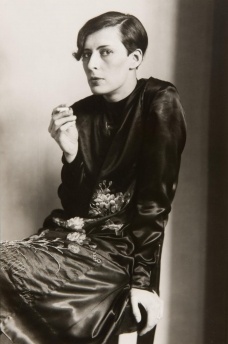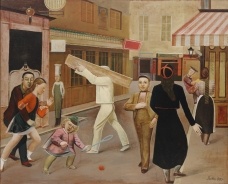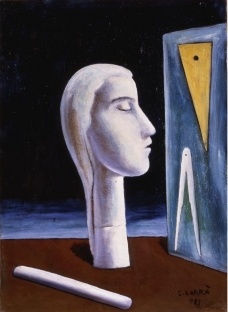
newspaper
agenda cultural
Full rotunda show includes painting, sculpture, photography, architecture, film, fashion, and decorative arts, featuring many works never shown before in the United States
Following the chaos of World War I, a move emerged towards figuration, clean lines, and modeled form, and away from the two-dimensional abstracted spaces, fragmented compositions, and splintered bodies of the avant-gardes—particularly Cubism, Futurism, and Expressionism—that dominated the opening years of the 20th century. After the horrors visited upon humanity in the Western hemisphere by new machine-age warfare, a desire reasserted itself to represent the body whole and intact. For the next decade-and-a-half classicism, “return to order,” synthesis, organization, and enduring values, rather than the pre-War emphasis on innovation-at-all-costs, would dominate the discourse of contemporary art. Chaos and Classicism will trace this interwar classical aesthetic as it worked its way from a poetic, mythic idea in the Parisian avant-garde; to a political, historical idea of a revived Roman Empire, under Mussolini; to a neo-Platonic High Modernism at the Bauhaus, and then, chillingly, a pseudo-biological classicism, or Aryanism, in nascent Nazi culture.

August Sander, Secretary at a West German Radio Station, Cologne (Sekretärin beim Westdeutschen Rundfunk in Köln), 1931, Gelatin silver print, 26 x 17.1 cm, Printed 1990 by Gerd Sander, edition 11/12, Courtesy Julie Saul Gallery, New York, © 2010 Die Phot

Balthus, The Street (La rue), 1933, Oil on canvas, 195 x 240 cm, The Museum of Modern Art, New York, James Thrall Soby Bequest, 1979, © 2010 Artists Rights Society (ARS), New York/ADAGP, Paris, Digital image © The Museum of Modern Art/Licensed by SCALA/Ar

Carlo Carrà, The Engineer’s Mistress (L’amante dell’ingegnere), 1921, Oil on canvas, 55.1 x 39.9 cm, Gianni Mattioli Collection, On long-term loan to the Peggy Guggenheim Collection, Venice, © 2010 Artists Rights Society (ARS), New York/SIAE, Rome

